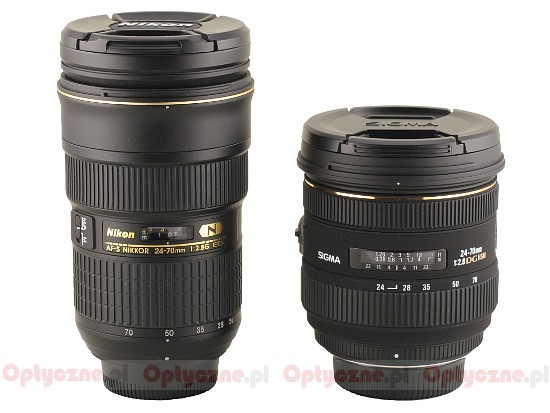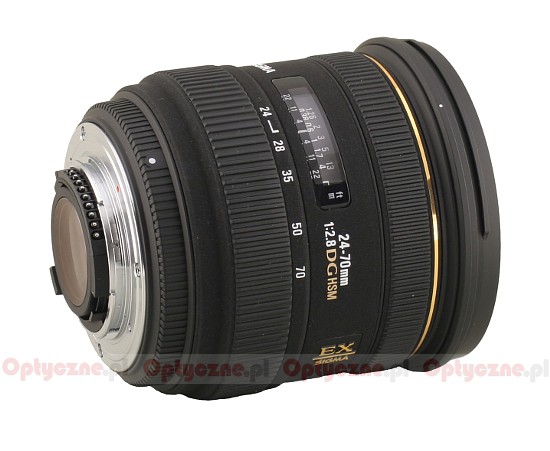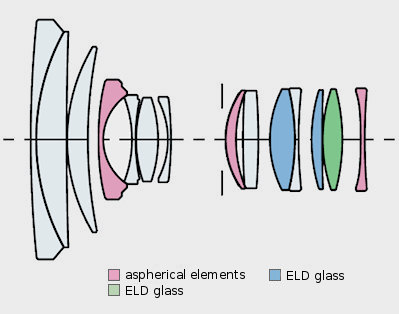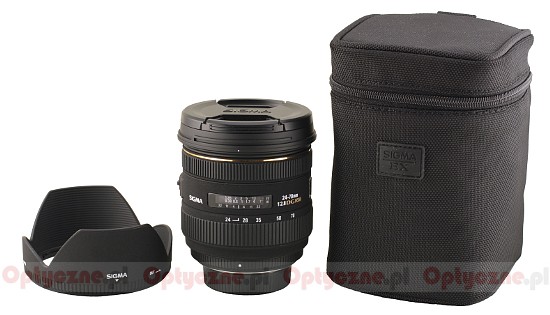Sigma 24-70 mm f/2.8 EX DG HSM
3. Build quality
 |
Interesting differences can be spotted immediately. The Sigma is the lightest and the smallest lens of all. We must add, though, that these small dimensions don’t have any influence over the size of the front element, which is surrounded by the 82 mm filter thread. It means the filters will cost an arm and a leg.
Please Support UsIf you enjoy our reviews and articles, and you want us to continue our work please, support our website by donating through PayPal. The funds are going to be used for paying our editorial team, renting servers, and equipping our testing studio; only that way we will be able to continue providing you interesting content for free. |
- - - - - - - - - - - - - - - - - - - - - - - - - - - - - - - - - - - - - - - - - - - - - - - -
You can clearly see the construction differences, used in the different lenses. The Sigma is the closest to the Sony/Zeiss, because both lenses become significantly bigger by traveling to 70 mm. The reverse is true for the Canon, which is the shortest at the maximum focal length. The Nikkor behaves in a different manner - as it is very long anyway, it becomes the shortest at the middle of the focal range and then it changes its dimensions very slightly traveling from one focal length to another.
The Sigma presents a quality typical for the EX series lenses so it’s really difficult to pick holes or fault anything. We get a metal bayonet, then a comfortable, relatively wide and corrugated zoom ring. The fluency and precision of its operation are beyond reproach. Next, there is a glass pane with a clear distance scale with markings in both meters and feet and also depth of field markings. Beneath, there is a comfortable manual focus ring, which works with due resistance, allowing to set the required parameters in a very precise way.
The lens ends with the front element, surrounded by a non-rotating filter thread with a diameter of as much as 82 mm. As we’ve mentioned before, the filters will be rather expensive.
 |
What’s interesting, of all top-notch 24-70 mm f/2.8 lenses, the Sigma is optically the simplest. It consists of 14 elements in 12 groups when the rivals have from 15 to 17 elements. The constructors weren’t skimpy with special glasses, though. We have here 1 ELD (Extraordinary Low Dispersion) glass, 2 SLD (Special Low Dispersion) glass elements and 3 aspherical elements. What’s more, inside the lens we can find a 9 diaphragm blades aperture which can be stopped down to f/22.

Traditionally for the EX Sigma series, the buyer gets both caps, a petal-type lens hood and a hard case in the set. The warranty conditions are not bad either.
 |






